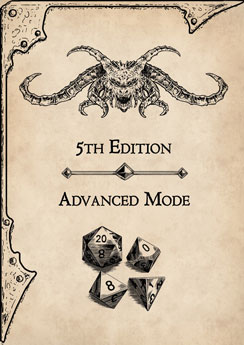Huge beast (animal), unaligned
Armor Class 12 (Natural Armor)
Armor Class (suggested) 15 (Natural Armor)
Hit Points 90 (12d12 + 12)
Hit Points (suggested) 126 (12d12 + 48)
Speed Swim 60 ft.
Speed (suggested) Swim 90 ft.
Proficiency Bonus +2
Proficiency Bonus +5 (5th Edition Advanced Mode)
| STR | DEX | CON | INT | WIS | CHA |
|---|---|---|---|---|---|
| 19 (+4) | 10 (+0) | 13 (+1) 19 (+4)* | 3 (-4) | 12 (+1) | 7 (-2) |
Saving Throws (suggested) Str +6, Con +6
Skills Perception +3
Senses Blindsight 120 ft., passive Perception 13
Challenge 3 (700 XP)
Echolocation. The whale can’t use its blindsight while deafened.
Hold Breath. The whale can hold its breath for 30 minutes
Keen Hearing. The whale has advantage on Wisdom (Perception) checks that rely on hearing.
ACTIONS
- Bite. Melee Weapon Attack: +6 to hit, reach 5 ft., one target. Hit: (5d6 + 4) piercing damage.
- Bite (suggested). Melee Weapon Attack: +6 to hit, reach 5 ft., one target. Hit: 19 (6d4 + 4) piercing damage. If the target is a Medium or smaller creature, it is grappled (escape DC 14). Until this grapple ends, the killer whale can bite only the grappled creature and has advantage on attack rolls to do so.
5th Edition Advanced Mode
Limiting the power of a character and making the overall difficulty of the game harder, does not reduce the creativity, indeed it does quite the opposite.
The Game Master has the option to use any and all of the instances proposed in this guide, or just some of them according to their preference.
It is the lack of something that move and motivate characters, not the abundance of it
DESCRIPTION
The killer whale, also known as the orca, is a large and powerful aquatic predator that resembles a black and white dolphin. It has a sleek and streamlined body, a dorsal fin that can reach up to six feet in height, and a mouth full of sharp teeth. Killer whales are highly intelligent and social animals that live in pods of up to 40 members. They communicate with each other using a variety of clicks, whistles, and calls. Killer whales are found in all oceans of the world, from the polar regions to the tropics.
COMBAT
Killer whales are fierce hunters that can take down prey much larger than themselves, such as seals, sharks, and even other whales. They use their echolocation to locate and track their targets, and their keen hearing to avoid danger. Killer whales can also cooperate with each other to coordinate attacks and share food. In combat, killer whales use their bite to inflict piercing damage on their enemies. They can also ram their foes with their powerful bodies, or drag them underwater to drown them.
HABITAT / SOCIETY
Killer whales are nomadic creatures that travel long distances in search of food and mates. They prefer cold and temperate waters, but can adapt to any marine environment. Killer whales form strong bonds with their pod members, and often stay with them for life. Each pod has its own dialect, culture, and hunting strategies. Killer whales are curious and playful animals that enjoy interacting with other creatures, including humans. They are also very protective of their pod mates, and will defend them from any threat.
ECOLOGY
Killer whales are apex predators that play an important role in maintaining the balance of the marine ecosystem. They regulate the populations of their prey species, and prevent them from overgrazing or depleting the resources. Killer whales also provide food for scavengers, such as birds and fish, that feed on their leftovers. Killer whales have few natural enemies, except for humans who hunt them for their meat, oil, and skin.
